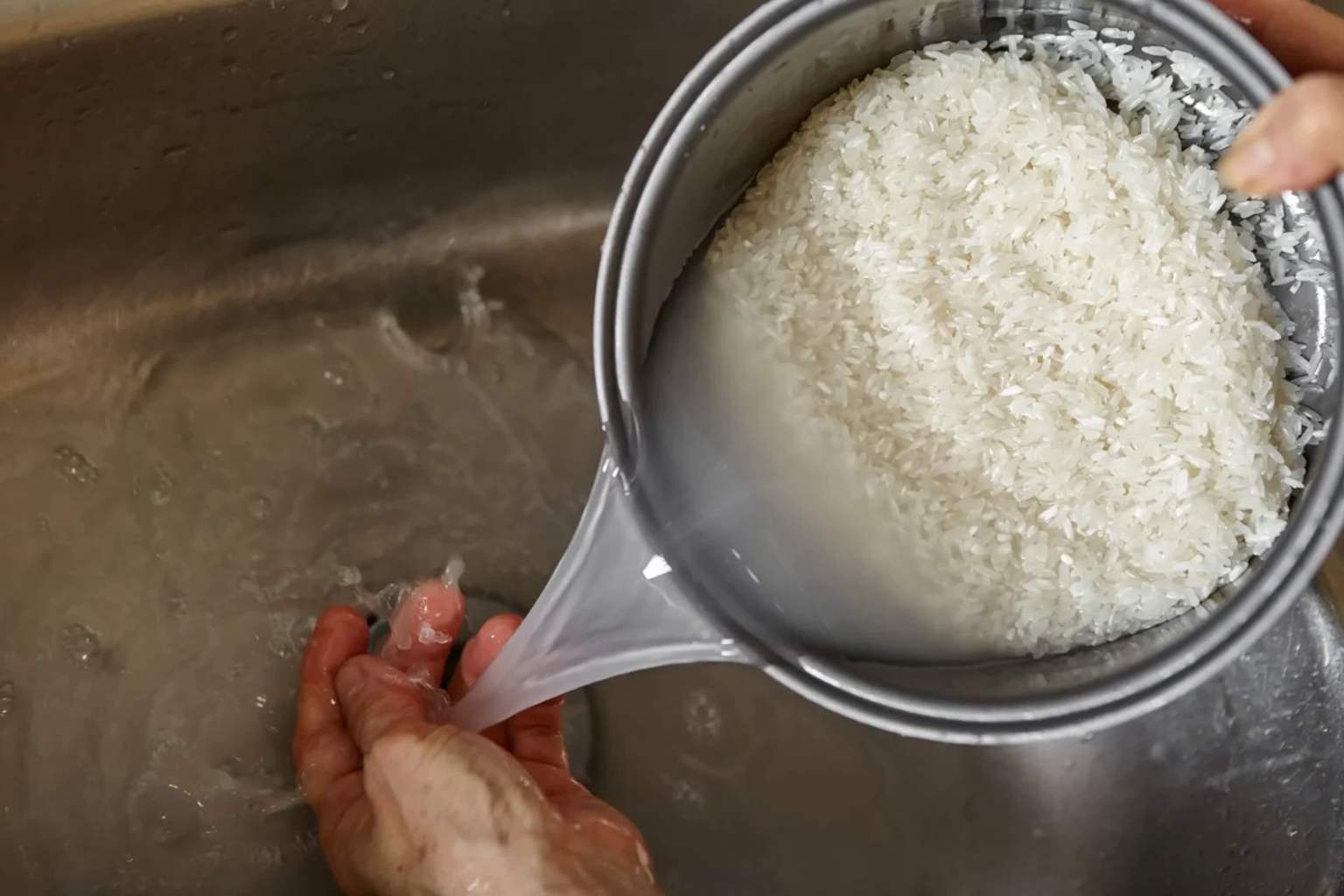At first glance, white rice seems like a clean and simple staple on our plates. But hidden beneath its polished surface, white rice can contain inorganic arsenic and various pesticide residues from farming and processing. Knowing how many times to wash rice before cooking not only improves its taste and texture but is a meaningful step to protect your health and that of your family.
If you have ever thought a quick rinse was enough, experts recommend washing your rice much more thoroughly. Let’s dive into why washing white rice carefully matters, how arsenic and pesticides end up in the grains, and simple ways to reduce these risks in your daily meals.
Washing white rice reduces arsenic and pesticides
Health authorities stress washing fruits and vegetables with clean water to remove soil, bacteria, and pesticide traces. But the same care should apply to white rice, a key ingredient in many beloved dishes like arroz con pollo and arroz chaufa.
Experts recommend washing rice four to six times, or until the water runs almost clear. This thorough rinsing helps remove the surface starch that makes rice sticky, along with dust, impurities, and some residues of pesticides and inorganic arsenic.
One even more effective step is to soak the rice for at least 30 minutes before cooking and discard the soaking water. This simple act can reduce harmful compounds further. Another method is cooking rice with an excess of water — about six parts water to one part rice — then draining the extra water like pasta. Studies show this can cut arsenic levels by nearly 40% to 60%.
Understanding the risks of arsenic and pesticides in rice
Inorganic arsenic is a heavy metal naturally found in soil and water, though farming pollution often increases its presence. Rice absorbs arsenic more readily than other grains since it’s grown in flooded fields. The mineral settles in both the rice husk and the grain itself, meaning even polished white rice can contain arsenic.
Beyond arsenic, white rice may hold residues of common pesticides such as:
– Chlorpyrifos, a neurotoxic insecticide harmful especially to children
– Triclazole, a fungicide combating rust disease in rice crops
– Propiconazole, a fungicide linked to hormone system disruption
– Buprofezin, an insecticide suspected of hormonal imbalance effects
– Glyphosate, a widely used herbicide classified as “probably carcinogenic” by the World Health Organization
– Carbendazim, a fungicide potentially impacting fertility and fetal development
Though these chemicals usually appear at levels allowed by law, repeatedly eating them through daily rice consumption could pose cumulative health risks. Vulnerable groups include pregnant women, children, and those with chronic diseases.
How arsenic and pesticides affect your health and diet tips
Long-term exposure to inorganic arsenic may contribute to serious health problems such as skin, lung, and bladder cancers; cardiovascular diseases; nervous system disorders; type 2 diabetes; liver and kidney damage; and developmental issues in children.
Pesticides lingering in rice, even at low concentrations, can have neurotoxic, hormonal, and reproductive effects, increasing the risk of chronic illnesses over time. Washing and soaking rice may seem like small tasks, but they add up as powerful protections for health.
Arsenic is also found in higher amounts in brown rice, which retains its husk where arsenic accumulates. It’s detected in small amounts in wheat, oats, barley, corn, and rye, though at much lower levels than rice. To reduce exposure, it’s wise to diversify the grains in your diet instead of relying heavily on rice alone. This strategy adds variety, nutrition, and safety.
Speaking from personal experience, soaking rice for 30 minutes has transformed my family meals. The grains cook more evenly, become fluffier, and feel lighter on the stomach. Knowing that this habit helps reduce arsenic and pesticide residues gives me peace of mind every mealtime.
What about you? How often do you wash or soak your rice? Have you noticed a difference in taste or texture? Share your thoughts and tips below—let’s create a community of cooks who care for flavor and health.
Spending a few extra minutes washing and soaking your rice can truly make a difference. Pass on these insights to friends and family so everyone can enjoy cleaner, healthier rice on the table.
